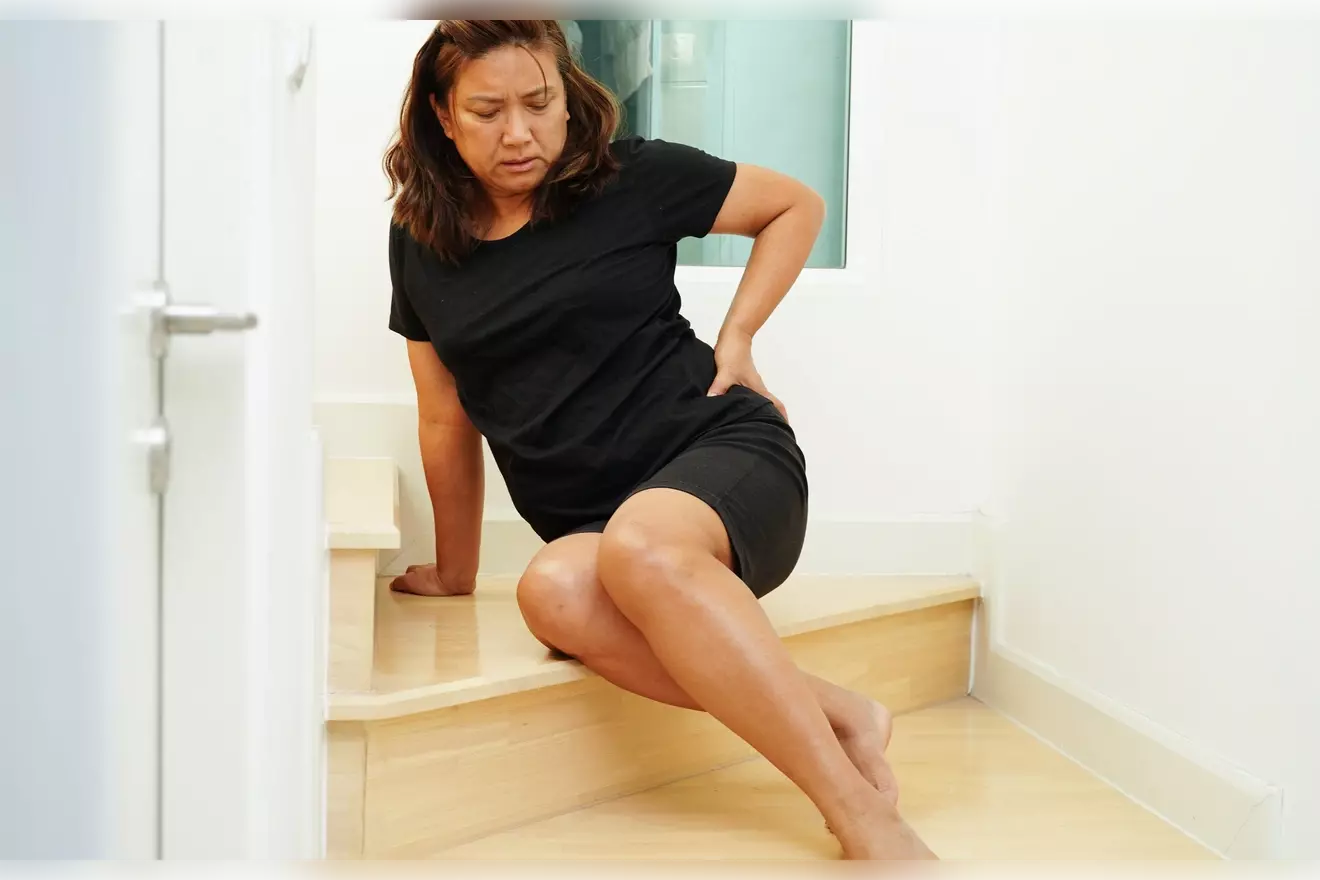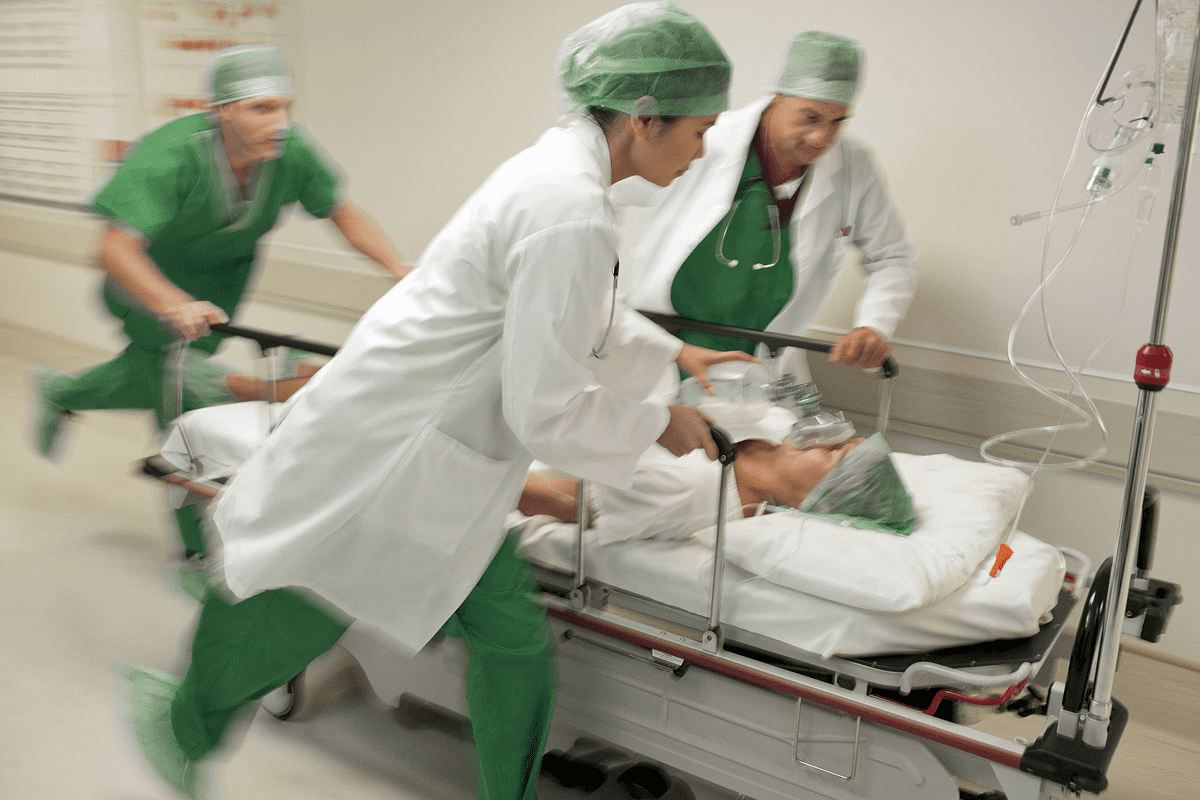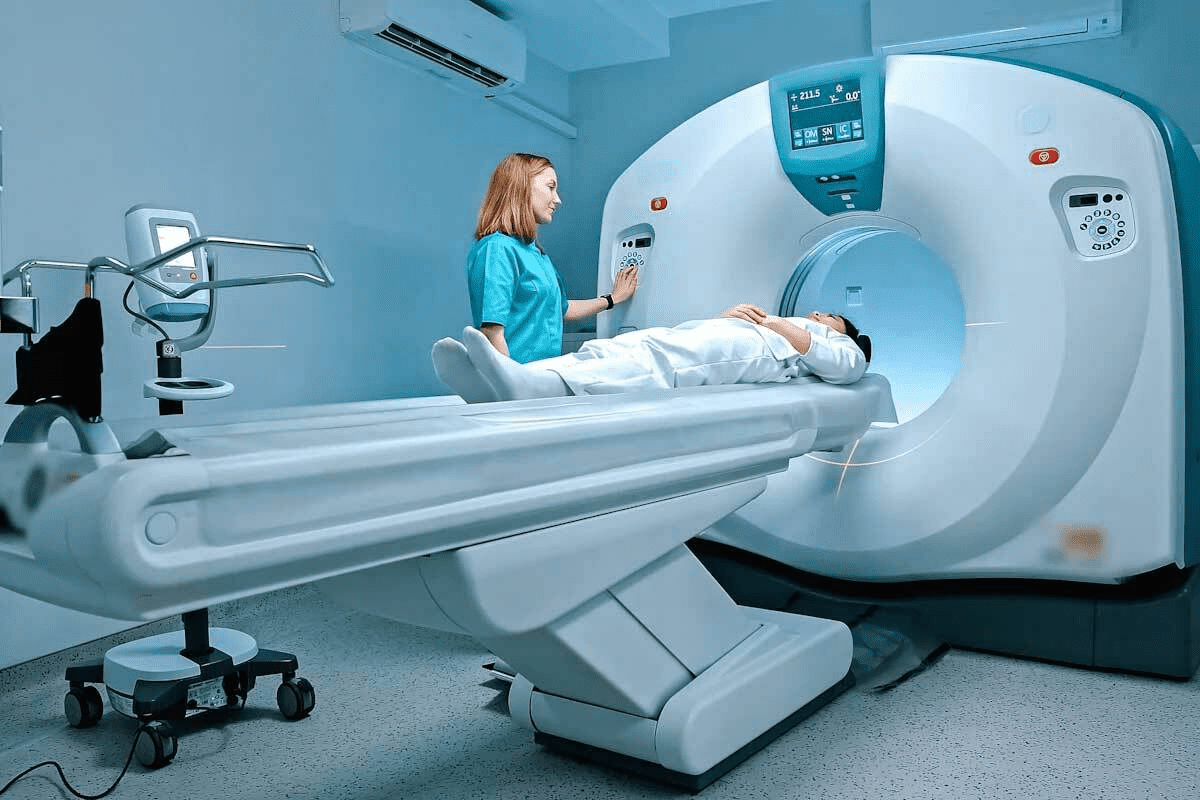Last Updated on November 26, 2025 by Bilal Hasdemir

Cancer patients going through chemotherapy face many tough side effects. One of these is the uncomfortable and distressing condition called “chemo belly.”
At Liv Hospital, we know that gastrointestinal problems during chemotherapy can really hurt a patient’s quality of life. Studies show that 50-55% of chemotherapy survivors deal with bloating, diarrhea, or constipation. This shows we need good ways to manage these issues.
We see how important it is to tackle chemo bloating and other symptoms. This way, we can give our patients the best care. In this article, we’ll dive into what “chemo belly” is and how to make it less uncomfortable.
Key Takeaways
- Understanding the causes and symptoms of chemo belly
- The impact of chemo belly on cancer patients’ quality of life
- Effective strategies for managing chemo bloating and related gastrointestinal issues
- The role of complete care in addressing chemo belly
- Support options available for patients experiencing chemo belly
Understanding Chemotherapy Belly: Definition and Overview
As cancer treatment gets better, knowing about side effects like “chemo belly” is key. We’ll look into what “chemo belly” is and how it affects cancer patients.
What Exactly is Chemo Belly?
“Chemo belly” isn’t a formal medical term. It’s a way to describe stomach problems some people get from chemotherapy. Symptoms include bloating, feeling full, and stomach pain.
These issues happen because chemotherapy messes with how we digest food and our gut bacteria.
Prevalence Among Cancer Patients
Many cancer patients get “chemo belly” during and after treatment. Studies show that a lot of people experience stomach problems. The exact number depends on the chemotherapy type, dosage, and the person’s health.
Here are some numbers to give you an idea:
| Type of Chemotherapy | Reported Incidence of Chemo Belly |
|---|---|
| Standard Chemotherapy | 40-60% |
| High-Dose Chemotherapy | 70-90% |
| Targeted Therapy | 20-40% |
This table shows how “chemo belly” rates change with different treatments. Knowing this helps doctors and patients plan better care.
Common Symptoms of Chemo Belly
Chemo belly is a common side effect of chemotherapy. It causes various uncomfortable symptoms that can affect a patient’s quality of life. It’s important to understand these symptoms to manage them well.
Digestive Disturbances
Digestive issues are common too. These include constipation and diarrhea. Chemotherapy can mess with the digestive system. This leads to irregular bowel movements and discomfort.
Pain and Discomfort Patterns
Pain and discomfort from chemo belly can differ. Some feel sharp pains, while others have a dull ache. Knowing these patterns helps in finding the right pain management.
| Symptom | Description | Management Tips |
|---|---|---|
| Bloating | Feeling uncomfortably full and gassy | Avoid gas-producing foods, eat smaller meals |
| Abdominal Distension | Visibly distended abdomen | Wear loose clothing, practice gentle stretches |
| Digestive Disturbances | Constipation or diarrhea | Stay hydrated, consider probiotics |
| Pain and Discomfort | Sharp or dull abdominal pain | Use pain relief medication as directed, practice relaxation techniques |
What Does Chemo Belly Look Like?
Chemotherapy-induced belly, or chemo belly, has specific traits that set it apart. We’ll look at these to help patients and caregivers understand it better.
Visual Characteristics
Chemo belly often shows as a swollen or distended belly. The swelling might be even all over or more in some spots. Sometimes, the skin looks tight and shiny because of the swelling.
The swelling from chemo belly can vary. Some might just feel a bit bloated, while others might see a big change in how their belly looks.
Differentiating from Other Abdominal Conditions
It’s important to tell chemo belly apart from other belly issues. Unlike ascites, which is fluid in the belly, chemo belly is mainly due to gas, bloating, and sometimes inflammation from chemo.
Other problems like irritable bowel syndrome (IBS), ovarian cysts, or liver disease can also make the belly swell. But chemo belly is directly linked to chemo’s impact on the digestive system.
Key factors to consider when differentiating chemo belly include:
- The timing of symptoms in relation to chemotherapy sessions
- The presence of other chemotherapy side effects
- The nature of the abdominal swelling (e.g., whether it’s accompanied by pain, tenderness, or changes in bowel habits)
Understanding these points helps doctors diagnose and treat chemo belly better. This brings relief to those going through chemotherapy.
The Science Behind Chemotherapy Belly
To understand ‘chemo belly,’ we need to look at how chemotherapy affects the digestive system. It targets fast-dividing cells, including those in the digestive tract. This can cause damage and symptoms like nausea and diarrhea.
How Chemotherapy Affects Digestive Cells
Chemotherapy drugs kill cells that divide quickly. The digestive tract’s cells do this too, making them vulnerable. This can damage the digestive lining and cause pain and discomfort.
Chemotherapy-induced damage to digestive cells can mess up digestion. Patients often see changes in their digestive health, which can be hard to deal with.
Impact on Gut Microbiome
The gut microbiome is key to our health, affecting digestion and immune function. Chemotherapy can upset this balance, leading to more bad bacteria and less good bacteria.
- Disruption of the normal gut flora
- Overgrowth of pathogenic bacteria
- Impaired immune function
This imbalance, or dysbiosis, makes ‘chemo belly’ symptoms worse. It makes it harder to manage the condition.
Increased Intestinal Permeability
Chemotherapy can also make the gut more permeable, or ‘leaky.’ This lets toxins and undigested food into the bloodstream. It can cause inflammation and other problems.
| Condition | Effect on Gut | Symptoms |
|---|---|---|
| Chemotherapy | Damage to digestive cells, disruption of gut microbiome | Nausea, diarrhea, abdominal pain, bloating |
| Increased Intestinal Permeability | Allows toxins into bloodstream | Inflammation, fatigue, digestive issues |
Understanding ‘chemo belly’ helps us see why managing it is complex. A detailed approach is needed to help patients with chemotherapy.
Duration and Timeline: How Long Does Chemo Belly Last?
Understanding how long chemo belly lasts is key for patients going through chemotherapy. The time it lasts can differ a lot between people. This depends on the type of chemotherapy, the person’s health, and any other health issues they might have.
During Treatment Phase
Chemo belly can start at different times for different people. Some might feel bloated and uncomfortable right after starting treatment. Others might not feel these symptoms until later in their treatment.
The timing of when chemo belly starts can vary a lot. This is because everyone reacts differently to chemotherapy. It’s important for patients to talk openly with their doctors about how they’re feeling.
Post-Treatment Recovery
For many, chemo belly symptoms start to go away after treatment ends. Post-treatment recovery is when the body starts to heal. This is when the digestive system often goes back to how it was before treatment. But, how long this takes can vary a lot.
We suggest that patients slowly get back to eating normally and drink plenty of water. This helps their digestive health during recovery. It’s also good to keep an eye on symptoms and talk to doctors if they don’t go away.
When Symptoms Become Chronic
Some people might not get relief from chemo belly symptoms after treatment. Chronic symptoms can be hard to deal with and need ongoing care. They might need extra medical help to manage.
If symptoms don’t go away, we help patients make a long-term plan. This might include changing what they eat, taking medicine, and other therapies. The goal is to improve their quality of life.
Immediate Relief Strategies for Chemo Belly
There are ways to ease the pain of chemo belly right away. Changing your lifestyle, diet, and using medicine can help a lot.
Managing Gas and Flatulence
Gas and flatulence are common with chemo belly. Stay away from foods like beans, cabbage, and broccoli. Eating smaller meals more often can also help.
Simple exercises like walking or stretching can help digestion. Products like simethicone can also reduce gas and bloating.
Alleviating Acute Bloating
Bloating is a big problem with chemo belly. Avoid foods high in salt and sugar to prevent water retention. Drinking water and herbal teas like peppermint or chamomile can help too.
Gentle abdominal massage can help digestion and relieve gas. A warm compress on your belly can also ease discomfort.
Techniques for Abdominal Pain Relief
Abdominal pain from chemo belly can be managed. Try relaxation techniques like deep breathing, meditation, or yoga. They can help reduce stress and pain.
Over-the-counter pain relievers can also help, but only with a doctor’s advice. Sometimes, stronger medicines are needed for severe pain.
By using these strategies, people going through chemotherapy can feel better. They can enjoy their life more despite the discomfort of chemo belly.
Nutritional Approaches to Manage Digestive Symptoms
Nutritional strategies are key in managing chemo belly. A balanced diet can ease digestive issues. This improves life quality for those getting chemotherapy.
Anti-Inflammatory Food Choices
Eating anti-inflammatory foods can lessen digestive symptoms. Omega-3 fatty acids in salmon and walnuts are very helpful. Also, eating many fruits and vegetables with antioxidants can fight inflammation.
Some great anti-inflammatory foods include:
- Turmeric, with curcumin
- Ginger, good for digestion
- Leafy greens like spinach and kale
- Berries, full of antioxidants
Foods to Avoid During Treatment
Some foods can make digestive symptoms worse during chemo. Stay away from foods high in fat, sugar, and spice. They can upset your stomach. Also, limit:
- Dairy if you’re lactose intolerant
- High-fiber foods that cause gas and bloating
- Caffeine and carbonated drinks
Hydration and Meal Planning Tips
Drinking enough water is vital for your stomach. Try to drink at least 8-10 glasses of water daily. Planning your meals is also important. Eating smaller, more frequent meals can help manage symptoms. It’s good to:
- Avoid big meals before bed
- Choose bland foods if you’re feeling nauseous
- Keep a food diary to see how you react to different foods
By following these nutritional tips, patients can manage their digestive symptoms better. This can improve their overall health during chemotherapy.
Medical Interventions and Treatments
For many patients, medical interventions are key in managing chemo belly symptoms. While lifestyle changes are important, medical treatments can offer significant relief from severe symptoms.
Prescription Options for Severe Symptoms
When chemo belly symptoms are severe, prescription medications may be needed. These include anti-nausea drugs, pain relievers, and bowel management drugs. It’s essential to follow a healthcare provider’s guidance when using these medications. We help patients find the right prescription options based on their needs and medical history.
For example, ondansetron can control nausea and vomiting from chemotherapy. Loperamide can also help with diarrhea, a common issue for some patients.
Over-the-Counter Solutions
For milder symptoms, over-the-counter (OTC) solutions can work well. These include antacids for heartburn, anti-gas medications, and fiber supplements. It’s important to talk to a healthcare provider before starting any new medication, even if it’s available over-the-counter. We guide patients on safely using OTC medications with their ongoing treatments.
Some find relief with simethicone products for gas and bloating. Others benefit from probiotics to keep their gut healthy during chemotherapy.
When to Seek Immediate Medical Attention
It’s vital to know when to seek immediate medical attention for chemo belly symptoms. Severe abdominal pain, vomiting blood, or dehydration signs are red flags. If you experience any of these symptoms, seek help right away. We teach our patients about warning signs for urgent medical evaluation.
If symptoms don’t improve or get worse, it’s time to review your treatment plan with your healthcare provider. They may need to adjust it to manage chemo belly and keep cancer treatments going.
Physical Activities That Help Reduce Chemo Belly
For those dealing with chemo belly, certain physical activities can help a lot. We know that fighting chemo belly needs a mix of gentle exercises, relaxation, and lifestyle changes.
Gentle Movement Practices
Gentle exercises are key to feeling better during chemo. Yoga and tai chi can boost digestion and cut down on bloating. These practices offer gentle stretches and movements that ease chemo belly discomfort.
Some benefits of gentle movement practices include:
- Improved flexibility and range of motion
- Enhanced digestive health
- Reduced stress and anxiety
Abdominal Massage Techniques
Abdominal massage is also a great way to ease chemo belly symptoms. Gentle massages can kickstart digestion, ease gas, and lessen bloating. It’s wise to talk to a healthcare pro to learn the right massage moves.
| Technique | Description | Benefits |
|---|---|---|
| Light Stroking | Gentle, superficial strokes on the abdomen | Relaxes abdominal muscles, improves blood flow |
| Kneading | Gentle kneading motion on the abdominal area | Stimulates digestion, relieves gas |
Breathing Exercises for Digestive Health
Breathing exercises are also vital for managing chemo belly. Deep, controlled breathing can lower stress, promote calm, and aid digestion. Diaphragmatic breathing is a top choice.
To practice diaphragmatic breathing:
- Lie on your back with your knees bent
- Place one hand on your abdomen and the other on your chest
- Inhale deeply through your nose, letting your abdomen rise while your chest stays steady
- Exhale slowly through your mouth, letting your abdomen fall
Adding these activities to your daily life can help manage chemo belly and boost your health.
Long-Term Management for Cancer Survivors
Many patients face ‘chemo belly’ after chemotherapy. They need long-term strategies to manage it. It’s important to address the digestive system’s lingering effects after treatment.
Rebuilding gut health is key. Probiotics and prebiotics help restore gut balance. Foods like yogurt, kefir, asparagus, and bananas are great for gut health.
Rebuilding Gut Health After Treatment
To rebuild gut health, survivors can try these:
- Eat fermented foods
- Stay hydrated
- Avoid irritating foods
“The gut microbiome is a complex ecosystem that, when disrupted, can lead to various health issues.” Restoring balance is vital for ‘chemo belly’ relief.
Monitoring Persistent Symptoms
Cancer survivors should watch their symptoms closely. If they get worse, tell your doctor. Keeping a symptom journal helps track changes.
“Keeping a food and symptom diary helped me identify triggers and manage my chemo belly more effectively.”
Integrating Supportive Therapies
Supportive therapies improve life quality for ‘chemo belly’ survivors. They include:
- Acupuncture for pain
- Mind-body therapies like meditation and yoga
- Nutritional counseling for a diet plan
Adding these therapies to their care plan helps manage symptoms and boosts well-being.
Conclusion: Navigating Life With Chemo Belly
Dealing with chemo belly needs a full plan. This includes medical help, eating right, and changing your lifestyle. We’ve looked at how to handle digestive problems caused by chemo, from quick fixes to long-term plans.
For long-term chemo belly management, focus on rebuilding your gut. Watch for ongoing symptoms and use supportive therapies. Eating anti-inflammatory foods, doing gentle exercises, and managing stress can help ease symptoms and improve life quality.
Handling chemo side effects, like chemo belly, needs a strong support system. We stress the need for tailored care and support for cancer fighters. Knowing what causes and shows chemo belly helps people manage it better and feel better overall.
In summary, dealing with chemo belly is a journey that needs patience, understanding, and active health care. With the right steps and support, people can lessen chemo’s impact on their stomach health and stay strong.
FAQ
What is chemo belly, and how does it affect cancer patients?
Chemo belly, or chemotherapy-induced bloating, is a common side effect. It causes discomfort, pain, and digestive issues in cancer patients.
How long does chemo belly typically last during and after treatment?
Chemo belly’s duration varies by person. It often lasts during treatment and may take time to go away after. Sometimes, symptoms can last long-term.
What are the common symptoms of chemo belly?
Symptoms include bloating, gas, flatulence, and pain in the stomach area. Digestive issues are also common.
How can I manage gas and flatulence caused by chemo belly?
To manage gas and flatulence, try avoiding foods that cause gas. Eat smaller meals and do gentle exercises like yoga or walking.
Are there any nutritional approaches that can help alleviate chemo belly symptoms?
Yes, eating anti-inflammatory foods and avoiding trigger foods can help. Staying hydrated and planning meals carefully also helps.
What medical interventions are available for severe chemo belly symptoms?
For severe symptoms, there are prescription and over-the-counter options. It’s important to talk to a healthcare provider to find the right treatment.
Can physical activities help reduce chemo belly symptoms?
Yes, gentle exercises, abdominal massage, and breathing exercises can help. They promote digestive health and reduce symptoms.
How can I rebuild my gut health after chemotherapy?
To rebuild gut health, add probiotics, prebiotics, and gut-friendly nutrients to your diet. Also, maintain a healthy lifestyle and manage stress.
When should I seek immediate medical attention for chemo belly symptoms?
Seek immediate medical attention for severe abdominal pain, vomiting, or constipation. These could be signs of serious complications.
Can chemo belly be a sign of an underlying issue that requires medical attention?
Yes, persistent or severe symptoms can indicate serious issues like bowel obstruction. Seek medical evaluation promptly.
How can I integrate supportive therapies to enhance my overall well-being during and after chemotherapy?
Supportive therapies like acupuncture, massage, or mind-body practices can help. They manage symptoms, reduce stress, and improve well-being.








